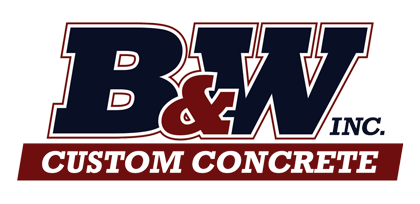Learn the Difference Between Physical and Chemical Popouts
What is an aggregate popout?
Popouts are usually cone-shaped imperfections in the concrete surface which can occur early on or years after the concrete has settled. They range in size from 1/16th of an inch to an inch in diameter. Usually, the fractured particle is at the bottom of the cavity with the rest of it attaching to the cone point.
Why do they occur?
There are two types of popouts - physical and chemical.
A physical popout occurs when a particle absorbs moisture or freezes. Swelling occurs creating internal pressures that will rupture the particle and the surface, taking a portion of the mortar with it. These types of popouts are only a problem in climates where freezing and thawing occur.
A chemical popout is a result of a chemical reaction related to alkali-silica also known as an alkali-silica reaction or ASR. A situation of high pH causes the breakdown of silicon and the formation of ASR gel.
How can physical popouts be avoided?
There are several aggregates that can cause popouts. Trying to avoid them, however, can be tricky because the ones that are available are natural gravels that have particles likely to result in popouts. An economical alternative is hard to come by but highly suggested.
If popouts are intolerable, a two-course construction can be used. What this means is a susceptible aggregate is used on the base level and the more expensive one is used on the top surface.
By reducing the water to cement ratio, the likelihood of saturation is reduced and the resistance to swelling increases. Be sure to allow enough time for the surface to cure. This will increase the strength of the surface and will reduce the permeability.
Use smaller aggregate particles because they develop lower stresses when subject to freezing. When a popout does occur, they are smaller and more manageable.
Chemical Popouts
Using a low-alkali cement or a non-reactive aggregate will help, although this isn’t practical in many areas of the country.
By dousing the surface with water after the concrete is poured, you will remove the alkalis that may have accumulated, thus reducing the chance for chemical popouts. Be sure to do this before applying the final curing.
Use Fly Ash Class F or slag cement as a substitute for partial cement. This helps in the reduction of permeability of the paste.
How to Repair Concrete Popouts?
To clean a popout chip, take out the remaining portion of the aggregate from the cavity then fill the void with a material such as a dry pack mortar, epoxy mortar, or other material. Be sure to follow the recommended manufacturer procedure. However, if there are too many popouts to fix, a concrete overlay may be used.
Before repairing, it is imperative to confirm the cause. Call B & W Custom Concrete to assist you.

